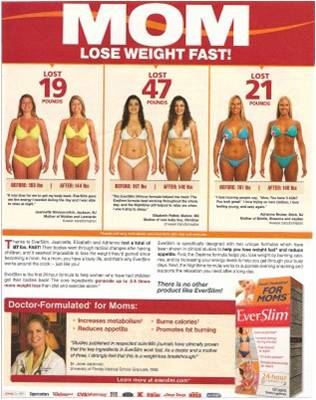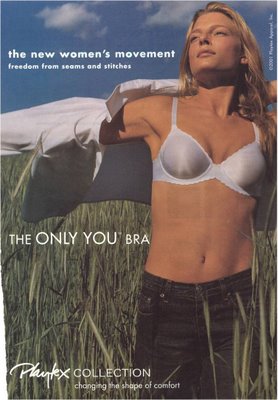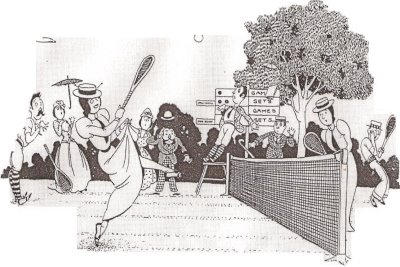Susanne T. sent me this image. She is in Latvia and walks by a furniture store every day that has this set of kitchen cabinets visible from the street.
gender
I think it’s especially interesting that, unless Latvia has a much more egalitarian division of household labor than the U.S., it would be primarily women using this cabinet to do dishes. Susanne, any information about gender and housework in Latvia?
This post is dedicated to my pregnant friends. You should buy this t-shirt.
In class this week my students and I are talking about the triple threat of production, consumption, and reproduction that characterizes modern capitalism. I use the cultural imperative that women have and raise babies (reproduction) and be beautiful and sexy while doing it (consumption), all of which is paid for by someone who is busy earning money at a job (production). Below are some of the images I use.
Be beautiful while pregnant (images from A Pea in the Pod and covergirls Britney Spears and Christina Aguilera):

Running in high heels while in the third trimester? Why, of course!
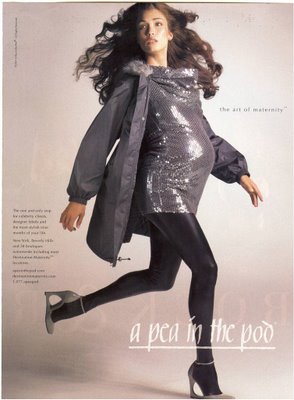

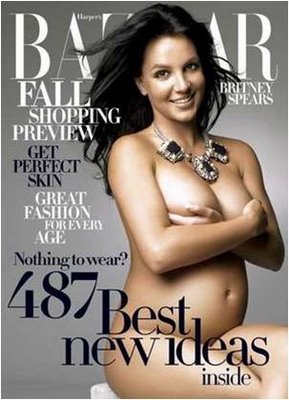
Get your body back as soon as possible (as demonstrated by Gwen Stefani and Tori Spelling):


If you’re not sure how, buy some books (all the better)!
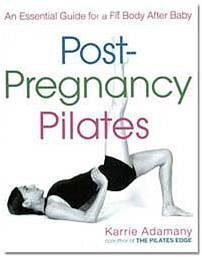

Resort to suspicious drugs if you need to:
Or get a Mommy Makeover. Extensive cosmetic surgery, that is:
Recommended by Parenting Magazine!
This is a nice short clip by Media Watch pointing out how women seem to be constantly “on their backs” in the mass media:
Lisa Wade, PhD is an Associate Professor at Tulane University. She is the author of American Hookup, a book about college sexual culture; a textbook about gender; and a forthcoming introductory text: Terrible Magnificent Sociology. You can follow her on Twitter and Instagram.
“The new women’s movement. Freedom from seams and stitches.”
This is another ad Lisa sent me years ago. I use it when discussing the de-politicization of social issues, and the commodification of freedom–it’s just something you buy. I also use this one from Lisa:
The Jeep Liberty–notice on the right it says “Glass Ceiling” and has an arrow pointing down below; so structural inequality at work is trivialized, and again, “liberty” is something we can purchase.
These ads go nicely along with the old Virginia Slims campaign, these other “liberated women” themed ads Lisa posted previously, and the “right hand ring” ad I posted.
Gwen Sharp is an associate professor of sociology at Nevada State College. You can follow her on Twitter at @gwensharpnv.
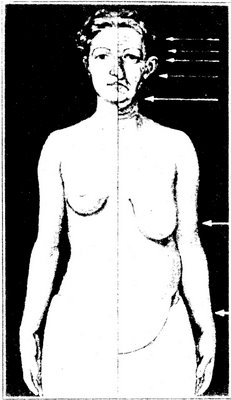 The caption to the photo said, “New York plastic surgeon Jacob Sarnoff drew this vision of total transformation–entitled ‘diagrammatic illustration of common deformities amenable to plastic surgery’–in 1936.”
The caption to the photo said, “New York plastic surgeon Jacob Sarnoff drew this vision of total transformation–entitled ‘diagrammatic illustration of common deformities amenable to plastic surgery’–in 1936.”
I found this in Venus Envy: A History of Cosmetic Surgery, by Elizabeth Haiken (1997), page 13.
In this ad, the imprint of a woman’s stiletto is her own body. Creative? Or creative and creepy?
Via Adverbox.
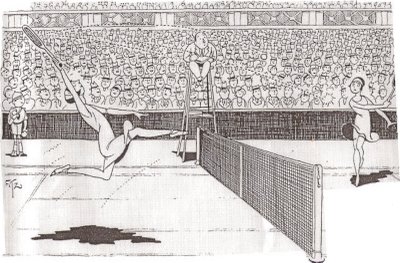
These two images were used in a 1927 ad for Wimbledon. Lisa actually sent them to me a couple of years ago but has never posted them, so I’m doing it. The point of showing the two images next to each other was to stress how liberated women were by 1927–they aren’t wearing stuffy old dresses to play tennis, and men aren’t shocked by the sight of a leg.
I use these, along with some of the “You’ve Come a Long Way, Baby” Virginia Slims ads, to show how “women’s liberation” is used by advertisers to sell products, as well as to imply that “now” (whenever “now” is) is always better than “then” (some indeterminate point in the past) and that the struggle for equality and freedom is over.
This post is dedicated to my pregnant friends. You should buy this t-shirt.
In class this week my students and I are talking about the triple threat of production, consumption, and reproduction that characterizes modern capitalism. I use the cultural imperative that women have and raise babies (reproduction) and be beautiful and sexy while doing it (consumption), all of which is paid for by someone who is busy earning money at a job (production). Below are some of the images I use.
Be beautiful while pregnant (images from A Pea in the Pod and covergirls Britney Spears and Christina Aguilera):

Running in high heels while in the third trimester? Why, of course!



Get your body back as soon as possible (as demonstrated by Gwen Stefani and Tori Spelling):


If you’re not sure how, buy some books (all the better)!


Resort to suspicious drugs if you need to:
Or get a Mommy Makeover. Extensive cosmetic surgery, that is:
Recommended by Parenting Magazine!
This is a nice short clip by Media Watch pointing out how women seem to be constantly “on their backs” in the mass media:
Lisa Wade, PhD is an Associate Professor at Tulane University. She is the author of American Hookup, a book about college sexual culture; a textbook about gender; and a forthcoming introductory text: Terrible Magnificent Sociology. You can follow her on Twitter and Instagram.
“The new women’s movement. Freedom from seams and stitches.”
This is another ad Lisa sent me years ago. I use it when discussing the de-politicization of social issues, and the commodification of freedom–it’s just something you buy. I also use this one from Lisa:
The Jeep Liberty–notice on the right it says “Glass Ceiling” and has an arrow pointing down below; so structural inequality at work is trivialized, and again, “liberty” is something we can purchase.
These ads go nicely along with the old Virginia Slims campaign, these other “liberated women” themed ads Lisa posted previously, and the “right hand ring” ad I posted.
Gwen Sharp is an associate professor of sociology at Nevada State College. You can follow her on Twitter at @gwensharpnv.
 The caption to the photo said, “New York plastic surgeon Jacob Sarnoff drew this vision of total transformation–entitled ‘diagrammatic illustration of common deformities amenable to plastic surgery’–in 1936.”
The caption to the photo said, “New York plastic surgeon Jacob Sarnoff drew this vision of total transformation–entitled ‘diagrammatic illustration of common deformities amenable to plastic surgery’–in 1936.”
I found this in Venus Envy: A History of Cosmetic Surgery, by Elizabeth Haiken (1997), page 13.
In this ad, the imprint of a woman’s stiletto is her own body. Creative? Or creative and creepy?
Via Adverbox.

These two images were used in a 1927 ad for Wimbledon. Lisa actually sent them to me a couple of years ago but has never posted them, so I’m doing it. The point of showing the two images next to each other was to stress how liberated women were by 1927–they aren’t wearing stuffy old dresses to play tennis, and men aren’t shocked by the sight of a leg.
I use these, along with some of the “You’ve Come a Long Way, Baby” Virginia Slims ads, to show how “women’s liberation” is used by advertisers to sell products, as well as to imply that “now” (whenever “now” is) is always better than “then” (some indeterminate point in the past) and that the struggle for equality and freedom is over.


